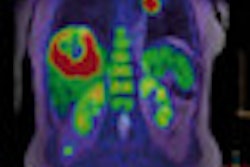Dear AuntMinnie Member,
As if any more evidence were needed, several new articles this week in our MRI Digital Community highlight the pitfalls of self-referred MRI.
First up is an article on a pair of studies presented at the RSNA 2011 meeting earlier this month that investigated the relationship between nonradiologist physicians' ownership of MRI equipment and their use of the modality, as well as whether these physicians had higher rates for ordering negative studies.
Researchers found that physicians with financial incentives did indeed have higher MRI usage rates, for both knee and lumbar scans, as well as a higher rate of negative studies -- an indicator of unnecessary utilization. Learn more by clicking here.
In other highlighted stories in the community this week, research from Johns Hopkins University found that MRI wasn't useful in guiding epidural steroid injections for lower back pain. On the other hand, a study presented at RSNA 2011 found that the modality changed the diagnosis and treatment plans for knee disorders.
Get these stories and more in your MRI Digital Community, at mri.auntminnie.com.
More on radiation symposium
Last week, we told you about a two-day symposium on radiation dose that convened on December 8 in Washington, DC. This week we continue our coverage of this important meeting with an article in our CT Digital Community on the challenges of determining exactly how much risk is involved in medical radiation.
Calculating risk is a vitally important task as entities such as the U.S. National Cancer Institute develop calculators designed to assess the risk a patient might incur by undergoing a particular imaging exam. Existing models for risk calculation are being updated with more current information, which in some cases is suggesting increased risk from smaller doses.
Minimizing risk is another important subject, especially with regard to children. Protocols to reduce dose as much as possible are making progress, but attacking the problem of medically unnecessary scans could also go a long way toward reducing the public's exposure to medical radiation, one speaker said.
Finally, while much of the debate has focused on the relationship between radiation and cancer, there are also noncancerous diseases caused by radiation. These can range from heart to respiratory disease, and unlike cancer there are no accepted models to predict risk.
Get the details on the symposium by clicking here, or go to ct.auntminnie.com.




















